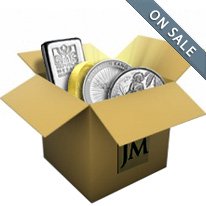Free Silver Price Widget For Your Website
This feature is only supported in the desktop browsers. Please visit this page in your desktop browser to retrieve the widget.
Share live silver prices with your website followers or on your blog, using our free silver price widget. To get started, please select one of the size dimensions from the drop-down menu below, and copy the code from the Widget Code text box and paste it into the desired position in your page. If you have any trouble, please contact us at support@jmbullion.com.
Widget Preview
Widget Code
Silver Prices in Thai Baht
The price of silver is always on the move, and the white metal is traded all over the world. Silver is typically quoted by the ounce, gram and kilogram. Silver can be quoted in and transacted in any currency. If you are looking to buy or sell silver in Thailand, for example, you would likely see prices quoted by the ounce, gram and kilo in Thai Baht. You may also see prices quoted in other currencies as well, such as the U.S. Dollar or euros.
The Thai baht is the official currency of Thailand. Like numerous other currencies, the Thai Baht may be subdivided into 100 smaller currency units. Like the British Pound, the baht was originally a unit of mass. The value of the currency was originally expressed using a corresponding amount of silver. The baht was made of solid silver and was one piece in a system of silver pieces of various weights.
The Thai baht was pegged to the dollar from 1956 to 1973 at a rate of 20.8 baht to one dollar. The rate of exchange was adjusted to 20 baht to one dollar until the late 1970s. The country eventually pegged its currency to the dollar once again, this time at a rate of 25 to 1 from 1984 to 1997. The currency was then floated and proceeded to lose half of its value. The baht has, however, recovered much of the value it lost against the dollar from its low point in the late 1990s.
Established in 1942, the bank of Thailand is in charge of issuing and controlling the country’s currency. The central bank is also tasked with all central banking functions including conducting monetary policy.
Silver Pricing in Thai Baht
The silver market can see periods of large price swings and market volatility as well as periods of sideways or range-bound price action. Silver has three primary sources of demand including investment demand, jewelry demand and industrial demand. Silver us currently used in many areas of industry. Some arenas in which the metal is already used include nuclear power, solar energy, chemical production and electronics. As more and more potential applications for silver are discovered, demand for the metal could potentially see a significant increase which in turn has the potential to fuel higher prices.
The Royal Thai Mint
Established in 1860, the Royal Thai Mint is part of Thailand’s treasury department. The mint is in charge of producing Thailand’s coinage, and also makes medals, Royal Thai orders and decorations.
The Economy of Thailand
Thailand has an export-oriented newly industrialized economy. Thailand has one of the largest economies in Southeast Asia, and the country’s exports account for the bulk of its economic output.
Thailand’s main export markets include Europe, Japan and North America as well as regional partners. In addition to rise, Thailand is a major exporter of shrimp and other seafood. Thailand has a significant fishing industry that employs a large amount of citizens.
Electronics are Thailand’s primary export sector. Thailand is one of the world’s largest producers of hard disc drives, although the country has seen declines in its electronics manufacturing as companies move operations elsewhere to take advantage of cheaper labor.
According to the World Bank, the Thai economy will grow at a rate of 3.2 percent in 2017, a rise of 2.8 percent from last year. Public investments and private consumption are said to be the primary catalysts for this economic growth. Thailand’s tourism industry has also been gaining steam, and may also potentially be a significant factor in higher growth.
Thailand has an aging working-age population and this may potentially become a barrier to higher growth in the years ahead unless the nation finds new sources of growth.
As the Thai economy grows and expands, it could potentially increase demand for silver. Higher employment and wages could potentially fuel demand for silver investments such as coins, bars and rounds. If manufacturing increases in the country, there could also potentially be a rise in demand from the nation’s industry.
World Silver Prices
- Arab Emirates Silver Prices
- Australia Silver Prices
- Brazil Silver Prices
- Canada Silver Prices
- Chile Silver Prices
- China Silver Prices
- Czech Republic Silver Prices
- Denmark Silver Prices
- Europe Silver Prices
- Hong Kong Silver Prices
- Hungary Silver Prices
- India Silver Prices
- Indonesia Silver Prices
- Israel Silver Prices
- Japan Silver Prices
- Malaysia Silver Prices
- Mexico Silver Prices
- New Zealand Silver Prices
- Norway Silver Prices
- Pakistan Silver Prices
- Philippines Silver Prices
- Poland Silver Prices
- Russia Silver Prices
- Singapore Silver Prices
- South Africa Silver Prices
- South Korea Silver Prices
- Sweden Silver Prices
- Switzerland Silver Prices
- Taiwan Silver Prices
- Thailand Silver Prices
- Turkey Silver Prices
- United Kingdom Silver Prices
- United States Silver Prices










